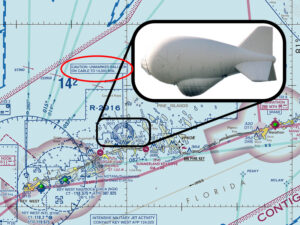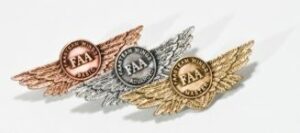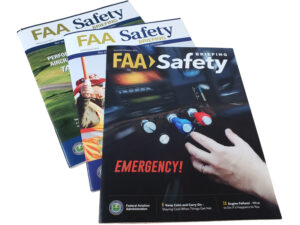 The holidays are approaching, days are getting shorter, and the cold weather is settling in. What to do when the AIRMETs for IFR, ice and other inclement weather keep us grounded? How about brushing up on your aviation knowledge?
The holidays are approaching, days are getting shorter, and the cold weather is settling in. What to do when the AIRMETs for IFR, ice and other inclement weather keep us grounded? How about brushing up on your aviation knowledge?
Start simple by looking at your local sectional chart. Before a giant tethered balloon causes you to become an NTSB statistic, take some time to check for any changes to the airspace around you. Has a new housing development caused a change to an approach corridor or does your favorite $100 hamburger destination now have a right-traffic pattern? Are there any new towers, or perhaps an Aerostat floating

around since you last studied your map? Look at the side of the airfield you rarely get to. That farmer’s field you long-ago “designated” as an alternative landing field is now a shopping center.
Near our headquarters in Gainesville, Florida, Payne’s Prairie, a large open area just south of town, was mostly grassland until hurricane Irma passed through in 2017, raising the water table and returning the area to its former swamp-like state. Instructors, is the practice area you used during your training still the best option for your students? Update your situational awareness.
CFIs, if your flight time is waning with the daylight, consider getting a jump start on your Flight Instructor Refresher Course (FIRC). You can complete it at any time within the 3 months prior to the month of expiration without having your expiration date reset.

For example, if your certificate expires in March, you may complete your course on or after December 1st. You can actually complete all but your last unit of training prior to that date, then finish the course on December 1. Rather than cramming 16 hours of refresher training into a weekend, work on one lesson every few weeks and take your time to actually learn something new.
Similarly, most mechanics with Inspection Authorization (IA) need to complete 8 hours of recurrent training each 12 months prior to a standing March 31st deadline. Now is a great time to get a jump on those 8 hours of IA refresher training, rather than waiting until March 30th to get it done.
Get together with fellow pilots and enthusiasts and do some “armchair flying” and storytelling. We all have a few great stories to tell. Use them to pass on the wisdom and resourcefulness of your own flying; tell how you found yourself in a tight spot but thought your way out. Never be shy about passing on the nuggets of wisdom you gained if it may be helpful to anther pilot.
 If it’s been a while since you’ve been current, and want to get back into flying, take an online Pilot Refresher Course. Not only will you brush up on your aviation knowledge, you’ll also earn FAA WINGS Pilot Proficiency Program credits which can count toward your next flight review.
If it’s been a while since you’ve been current, and want to get back into flying, take an online Pilot Refresher Course. Not only will you brush up on your aviation knowledge, you’ll also earn FAA WINGS Pilot Proficiency Program credits which can count toward your next flight review.
You can also find a computer, get a yoke and pedals, and have some fun going through the basics. Build, or better yet, buy a simulator – they may cost less than you think. Keep that perfect flare sharp by practicing short field, soft field, and crosswind landings. Get aggressive and fly approaches to the minimums and challenge your buddies to see who can fly the best holding pattern. Making it a competition can make the exercise more exciting and provide an incentive to do something that might otherwise be considered boring. Pilots generally enjoy the challenges when they can be done safely.
Being in the air is where we want to be, so don’t get wrapped up about not being able to log time from a non-approved training aid. Make it realistic by having a partner simulate air traffic control. Practice requesting a clearance while flying approaches into your home field, or better yet, unfamiliar airports. You can maintain your instrument proficiency if you just do a little extra planning. The simulator is a great way to keep the rust off and build up anticipation for your next real flight.
 One last thing, don’t forget that the FAA publishes numerous circulars and bulletins. Take your winter downtime to re-familiarize yourself with details such as changes in the FAR/AIM, read the past few FAA Safety Briefing magazine issues, download the latest handbooks, and read up on a host of other official publications.
One last thing, don’t forget that the FAA publishes numerous circulars and bulletins. Take your winter downtime to re-familiarize yourself with details such as changes in the FAR/AIM, read the past few FAA Safety Briefing magazine issues, download the latest handbooks, and read up on a host of other official publications.
Keep your head in the game! Get the work done to keep you safe and proficient.
Written by Bruce Blashka, Gleim Aviation Training Consultant.
Contact Bruce for the latest refresher training courses and Gleim handbooks at 800-874-5346, ext. 442.

